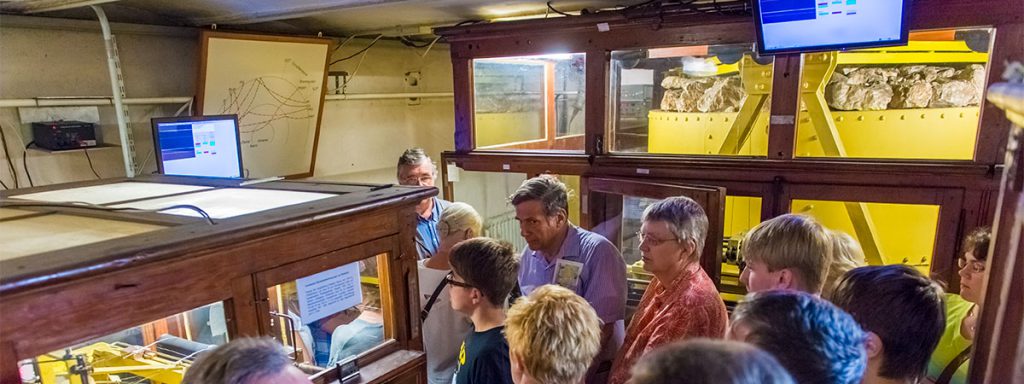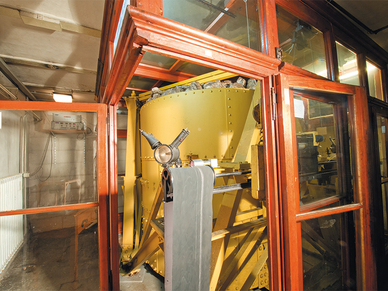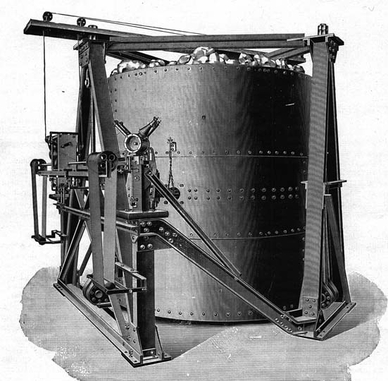
17-tonne pendulum
The devices from the workshops G. Bartels and Spindler & Hoyer, Göttingen, set the standard worldwide until the early 1960s
(From: Schreiber, 2000) “The mass of this short-period horizontal seismograph weighing 17,000 kg consists of an iron bucket of about 2 m diameter and 2 m height, which is filled with many tonnes of barite. It is suspended on three holders of a scaffolding structure standing on the ground. The construction was started in 1904 at the workshops of G. Bartels and Spindler & Hoyer, Göttingen. The north-south component has been recorded since 1907; the recording of the south-west component was only set up in 1932. The natural period is 1.2 s; the purely mechanical magnification by means of levers up to the needles recording on smoked paper is 2,200-fold. The writing speed is about 60 mm/min.”
Prototype for other seismographs
This seismograph is also the prototype for several instruments manufactured by the company Spindler & Hoyer. The huge mass of 17 t is needed to minimise the minor, but yet existing frictional losses in the lever bearings, but most importantly those of the recording pens on the smoked paper relative to the recording movements, given the short-period oscillations and the strong magnification.
The extremely sophisticated mechanism makes this instrument highly sensitive: A needle movement can already be triggered by directing a strong breath of air at the iron bucket.




